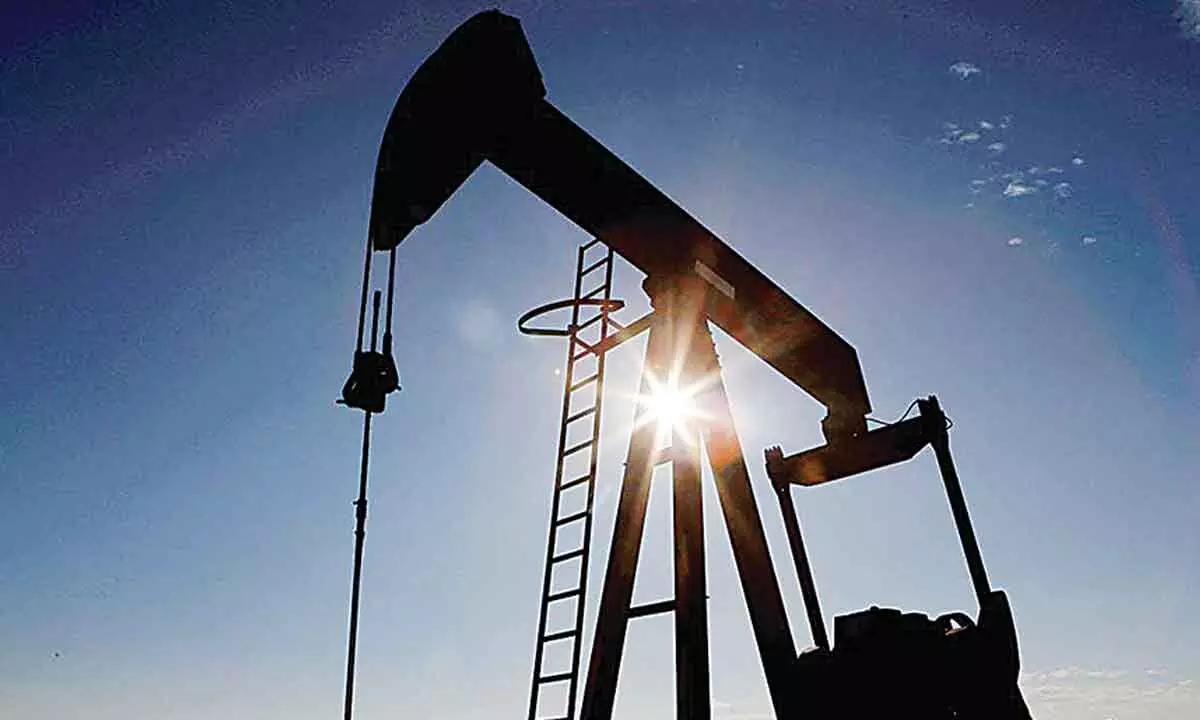Which way will global crude oil prices go?

Global financial agency JP Morgan says crude oil prices will zoom to $190 to $380 per barrel if Russia cuts its crude output, while Citi Research expects oil prices to fall to as low as 65 dollars per barrel by the end of 2022
Global crude oil prices have suddenly dipped below the 100 dollar per barrel mark, but uncertainty remains over the future of oil markets. The downturn has come for the first time since the Ukraine conflict led to a spurt in oil prices at the end of February. The subsequent hardening trend in international oil markets has created inflationary pressures all over the world. It has been of particular concern to India which imports over 85 per cent of its crude requirements.
It is thus interesting that two reputed financial agencies have now made vastly differing predictions about the state of oil markets by next year. JP Morgan has forecast that in case Russia decides to cut crude output in response to efforts to cap prices, the world could see oil touching stratospheric levels of 190 to 380 dollars per barrel by the end of 2022. In sharp contrast, Citi Research expects prices to crash to about 65 dollars per barrel, given expectations of a recession hitting the world economy.
The varied forecasts show that making long-term projections about international oil markets is not easy in the present geopolitical scenario. Currently, the benchmark Brent crude is ruling at about 99 dollars per barrel. This is much lower than the peak of 130 dollars per barrel reached immediately after the Ukraine conflict had begun. The market subsided subsequently but volatility continues owing to many factors. First, oil cartel, OPEC, is increasing output only moderately every month as was decided in September last year. It has not yielded to appeals from major consuming countries like the US and India to raise production sufficiently to meet the higher demand and thus bring about a softening of prices.
Second, western sanctions against Russian oil have resulted in a cut in that country's output and hence reduced overall availability in the market. Both China and India have stepped up purchases from Russia which are being offered at a considerable discount to market prices.
Third, there is little certainty about the return of Iran oil to world markets as much depends on the finalisation of talks with western countries over lifting of sanctions. In case, these are concluded soon, the flow of Iranian oil could help in easing prices.
At the same time, many other factors can have an impact on the oil price scenario in coming months. These include the progress of the Ukraine war as well as the fate of the Covid pandemic. But it is going to be the mismatch between availability and demand that will ultimately determine the oil market scenario at the end of the year.
According to the assessment by JP Morgan, oil prices could surge to as much as 380 dollars per barrel if Russia decides to slash production by 5 million barrels per day in response to western plans to cap the country's energy prices. The plan to cap the price of Russian oil was considered at the G-7 meeting last week in a bid to increase the impact of existing sanctions. It has been reported that this was proposed by either banning the sale or purchase of Russian oil above a certain price using European clout with global shipping insurance to enforce this rule. But the analysis showed that it would be possible for Moscow to cut output without causing serious damage to its economy. Even so, it felt a more likely scenario was that Russia would cut its output by three million barrels per day which could push oil prices to 190 dollars per barrel. The country's production was pegged at about 10 million barrels per day in May, according to media reports.
On the other hand, Citi Research expects oil prices to fall to as low as 65 dollars per barrel by the end of 2022 owing to curtailed supplies along with a global economic slowdown that will reduce demand. It bases its forecast on expectations that Russia's exports would rise rather than fall by the end of the year owing to larger purchases by India and China.
It also makes its prediction in the backdrop of fears that some of the biggest economies may end up in a recession as central banks are raising interest rates in a bid to curb inflation. In such a scenario, rise in unemployment and failure of businesses could lead to a fall in the demand for energy. This would, in turn, result in a downturn of oil prices.
The very fact that two expert agencies have made predictions that are two ends of the spectrum indicates there are many more variables to take into account currently than in normal times. As mentioned earlier, the Ukraine war is one such factor and currently it looks extremely difficult to predict when this conflict will end. It could drag on for months or end suddenly due to some political or military turn of events.
The global demand outlook is also a variable that could change based on several factors. For instance, the resurgence of Covid that had all but disappeared from China led to crash in demand from the one of the world's biggest oil importers. Though the situation is improving in that country, there are still possibilities of Covid19 arising in other parts of the world, which would certainly lead to fall in demand yet again.
For India, the latest decline in prices has to be welcomed as otherwise the import bill will rise exponentially. This is at a time when foreign exchange reserves have been drawn down by 50 billion dollars over the last nine months though these still remain at a fairly comfortable level of 590 billion dollars. For the time being, however, emerging economies like India have no option but just to closely monitor the fast-moving developments in international oil markets.




















